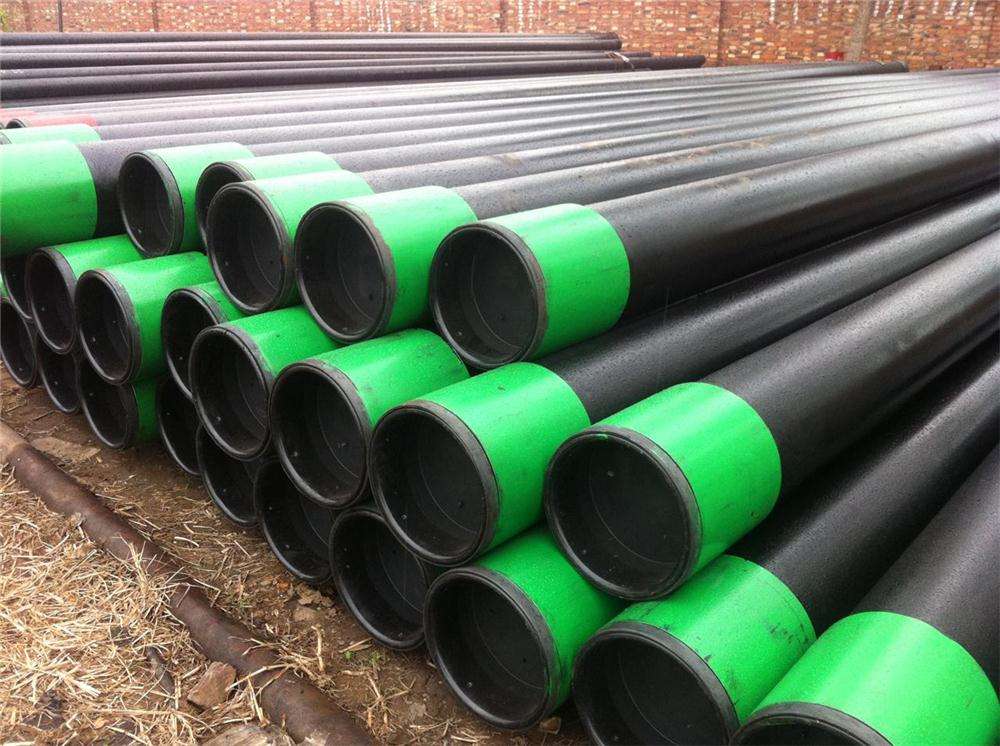I. Overview of Oil Casing

Oil Country Tubular Goods (OCTG) is an indispensable key component in oil and gas drilling and production operations, and is mainly used in the drilling, completion and production stages of oil and gas wells. According to different uses, oil casing can be divided into:
Surface Casing: Protect shallow groundwater and prevent well wall collapse.
Intermediate Casing: Stabilize the wellbore structure and prevent high-pressure formation fluid from invading.
Production Casing: As the main channel for oil and gas production, it must have high pressure resistance and corrosion resistance.
Tubing: Used to transport oil and gas from the bottom of the well to the ground.
The material, specifications and performance of oil casing directly affect the safety, production efficiency and life of oil and gas wells, so it occupies an important position in the oil industry.
2. Main application areas of oil casing
1. Conventional oil and gas production
In the development of traditional oil and gas fields, oil casing is used for:
Wellbore reinforcement: prevent formation collapse and ensure wellbore stability.
Isolate different pressure layers: avoid interference between high-pressure and low-pressure layers.
Oil and gas transportation: The oil pipe is used as a production channel to transport crude oil or natural gas to the ground.
2. Shale gas and tight oil development
Shale gas and tight oil production usually use horizontal wells and hydraulic fracturing technology, which has higher requirements for oil casing:
High-strength material: must withstand the impact of high-pressure fracturing operations.
Corrosion resistance: Shale formations often contain H₂S and CO₂, and special alloy steel or anti-corrosion coating is required.
Special thread design: ensure good sealing under high-pressure environment, such as Premium Connection.
3. Deep-sea oil and gas development
The deep-sea drilling environment is harsh, and the oil casing needs to have the following:
Ultra-high pressure resistance: Withstand deep-sea high pressure (>10,000 psi).
Low temperature resistance: The deep-sea temperature is low, and the steel needs to maintain toughness.
Fatigue resistance: Prevent long-term stress fatigue caused by waves and ocean currents.
4. High-temperature and high-pressure (HPHT) wells
In high-temperature (>150°C) and high-pressure (>10,000 psi) oil and gas reservoirs, the oil casing needs to meet the following requirements:
High-temperature deformation resistance: Prevent casing deformation or fracture due to thermal expansion.
Hydrogen sulfide (H₂S) corrosion resistance: Use high-chromium steel or duplex stainless steel.
5. Old well repair and secondary completion
In the later stage of oil field development, oil casing can be used for:
Casing repair: Use liner or expansion tube technology to repair damaged casing.
Side-drilling horizontal wells: Open windows in the original wellbore to side-drill and extend the life of the oil field.
III. Technical development trend of oil casing
1. High-strength and lightweight materials
Ultra-high-strength steel (such as Q125, P110): improve pressure resistance while reducing weight.
Composite casing: New materials such as carbon fiber reinforced plastic (CFRP) can reduce weight and improve corrosion resistance.
2. Intelligent oil casing technology
Fiber optic sensor casing: real-time monitoring of downhole temperature, pressure and strain.
Self-healing coating: automatic repair after damage, extending service life.
3. Environmental protection and sustainable development
Low-carbon manufacturing process: reduce carbon emissions in the production process.
Recyclable casing: improve material recycling rate.
4. Advanced connection technology
Metal-to-Metal Seal: improve sealing under high-pressure environment.
Expansion casing technology: reduce wellbore size loss and improve completion efficiency.
IV. Market prospects of oil casing
With the growth of global energy demand and the development of unconventional oil and gas resources, the oil casing market will continue to expand. It is estimated that by 2030, the global OCTG market will exceed US$30 billion, of which:
Shale oil and gas development remains the main driving force (North America, China, Argentina).
Deep sea and HPHT wells drive demand for high-end oil casing.
Intelligent and environmentally friendly technologies will become the focus of future competition.

